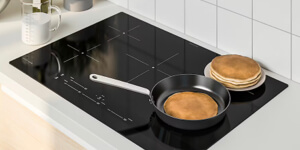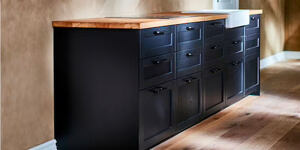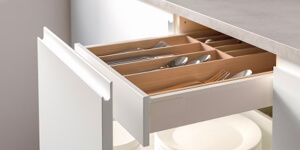2021 National Survey on Drug Use and Health NSDUH Releases
Still, about 25 percent of them will relapse even after 15 years of clean time. In looking at a study of 1162 individuals who remained sober at least eight years, it was determined that it was challenging to really determine who would stay sober. For example, only about 33 percent of people who were sober less than a year would remain sober.
Drug Abuse by Sex or Gender
- High-end inpatient residential treatment can often be thousands of dollars a day, with many less expensive options still too costly for low-income patients to afford.
- There is not much data available on race and those who seek drug rehab treatment.
- Although some people attempt to treat their addiction themselves, many are unsuccessful.
- MAT for opioid use disorder is often combined with behavioral therapy and counseling at drug rehab.
- Individual and group therapy, cognitive behavioral therapy, dual diagnosis therapy, family therapy, 12-step support groups, and recreational therapy are just some therapies you or your loved one may receive in an outpatient drug rehab program.
Some addicts lose their support systems due to repeated failures to reach sobriety or never had stable support from the start. High-end inpatient residential treatment can often be thousands of dollars a day, with many less expensive options still too costly for low-income patients to afford. Relapse is one of the biggest challenges addicts face when entering recovery. Sadly, the mentality around relapse is rather harsh, with many addicts assuming they’re a failure for relapsing.
How long do most people stay in drug rehab programs?
A measure of number of psychiatric diagnoses, including alcohol use other substance use disorders, was calculated by summing the total number of affirmative responses. Different demographics seek treatment to recover from different substances. Understanding those demographics and how they receive treatment can provide valuable insights into addiction treatment. The success rate of drug addiction therapy can vary wildly depending on the state, facility, and how success is being measured.
The chronic nature of addiction means that for some people relapse, or a return to drug use after an attempt to stop, can be part of the process, but newer treatments are designed to help with relapse prevention. Relapse rates for drug use are similar to rates for other chronic medical illnesses. If people stop following their medical treatment plan, they are likely to relapse. While some individuals are able to achieve sobriety without professional help, the chances of successful recovery are generally higher when individuals receive treatment and support from trained professionals.
Additionally, the individual’s living environment plays a crucial role in their recovery journey. A stable and supportive living environment free from triggers and temptations can create a conducive space for healing and growth. On the other hand, an environment rife with stress, conflict, or substance use can hinder progress and increase the risk of relapse. The presence of a strong support network consisting of family, friends, and support groups can greatly enhance the chances of successful recovery. The individual’s willingness and dedication to change play a significant role in recovery outcomes. “Connection is the opposite of addiction”5 has been touted and found true in many instances.
To fix this will require partnering with payors to develop and evaluate new models for incentivizing the provision of evidence-based SUD care. The 100 participants were primarily White (88%), male (67%), employed or in school (70%), and 40 years old on average (Table 1). Furthermore, most participants had been on community supervision in the last 90 days (76%) and about half of the sample lived in a rural area (52%). Three-quarters of the sample reported lifetime injection drug use (76%) and over half (57%) reported experiencing an overdose.
However, the research indicated that for those who could acquire five years of sobriety, their chance of relapse was less than 15 percent. When one is diagnosed with the disease, they may not ever be completely healed of it, but they can be treated, take their medication regularly, and live a good life. Outpatient drug rehab is the lowest level of care patients can transition to after completing an inpatient or residential program, partial hospitalization program, or an intensive outpatient program. Jessica graduated from the University of South Florida (USF) with an English degree and combines her writing expertise and passion for helping others to deliver reliable information to those impacted by addiction. Informed by her personal journey to recovery and support of loved ones in sobriety, Jessica’s empathetic and authentic approach resonates deeply with the Addiction Help community. In addition to managing a successful family medical practice, Dr. https://northiowatoday.com/2025/01/27/sober-house-rules-what-you-should-know-before-moving-in/ Hoffman is board certified in addiction medicine by the American Osteopathic Academy of Addiction Medicine (AOAAM).
It may take time, but with dedication and commitment, individuals can achieve recovery. The rate of recovery from drug addiction is highly variable, depending on a variety of factors such as the type of drug, the severity of the addiction, and the individual’s access to treatment. It is important to note that recovery from drug addiction is possible, and that there is hope for individuals who are struggling with drug addiction. At present, there are no medications available to treat addiction to stimulants like cocaine and methamphetamine.
Legacy Treatments Centers Contribute Positively To Drug Rehab Success Statistics
It’s difficult to define success when it comes to addiction recovery, as each person will manage their addiction differently throughout their life. It is never too late or too early to seek help through a drug rehab program. Addiction treatment is catered to younger patients, but each age group has a unique set of challenges and influences to consider. Only a tiny percentage of people addicted to alcohol or drugs take medication for it.
There are strategies of distraction and action people can learn to keep them from interrupting recovery. Another is to carefully plan days so that they are filled with healthy, absorbing activities that give little time for rumination to run wild. Exercise, listening to music, getting sufficient rest—all sober house can have a role in taking the focus off cravings. While relapse is a normal part of recovery, for some drugs, it can be very dangerous—even deadly. If a person uses as much of the drug as they did before quitting, they can easily overdose because their bodies are no longer adapted to their previous level of drug exposure.
By highlighting the treatment interests of this population, these data open avenues for developing comprehensive treatment models for PWUM. Further, there has been a lack of guidance on non-abstinent recovery indicators from PWUD themselves. Involving PWUD in the development of programs and policies that affect them is a core tenet of harm reduction and a critical strategy to advancing treatments that are acceptable to PWUD.
Signs of Sleeping Pill Addiction
Treatment can help individuals to address the psychological, social, and behavioural aspects of their addiction. Treatment programs can also provide individuals with the necessary tools and support needed to remain abstinent. Additionally, treatment can help individuals to develop healthy coping strategies to manage cravings and triggers. Drug addiction is a complex and challenging problem that affects people of all ages, backgrounds and cultures.
- Exercise, listening to music, getting sufficient rest—all can have a role in taking the focus off cravings.
- Call Pacific Sands Recovery Center or visit our contact form to learn more about our program.
- In one set of studies looking at some measures of dopamine system function, activity returned to normal levels after 14 months of abstinence.
- It’s hard to leave addiction behind without constructing a desirable future.
- Drugs that are considered “gateway drugs” (that is, substances that are often precursors to abuse of other, possibly more dangerous drugs) or deemed a public health risk may also be listed under Schedule I.
How Drug Rehab Helps Reduce Overdose Numbers
This response rate is similar to other nationally representative surveys (Grant et al., 2015, Center for Behavioral Health Statistics and Quality, 2016, Centers for Disease Control and Prevention, 2013). Data were weighted using the method of iterative proportional fitting so as to represent the US civilian population (Battaglia et al., 2009). A total of 2,002 individuals who had resolved an AOD problem were included in the final analyses. About half of Americans who self-identify as having resolved an AOD problem continue to use AOD in some form.
However, better data collection enhances our understanding of who seeks rehab and its positive effects. Participants were also offered an open response to describe what recovery means to them. Of the 95 open responses, 39 mentioned “abstinence”, “sobriety”, or “not using mood- or mind-altering drugs”.
One of the best ways to find connection is through peer support groups like Pills Anonymous (12-Step-based) or SMART Recovery groups (non-12-Step). You can also find connection and support through religious organizations, your workplace, and other community settings (like sports and craft communities). An addiction or dependence on sleeping pills can be treated, often with a tailored combination of behavioral therapies and medical care. Someone who’s unable to stop taking sleeping pills despite clear negative consequences has likely developed an addiction. These consequences could include job loss, damage to relationships, negative health effects, and stress.




